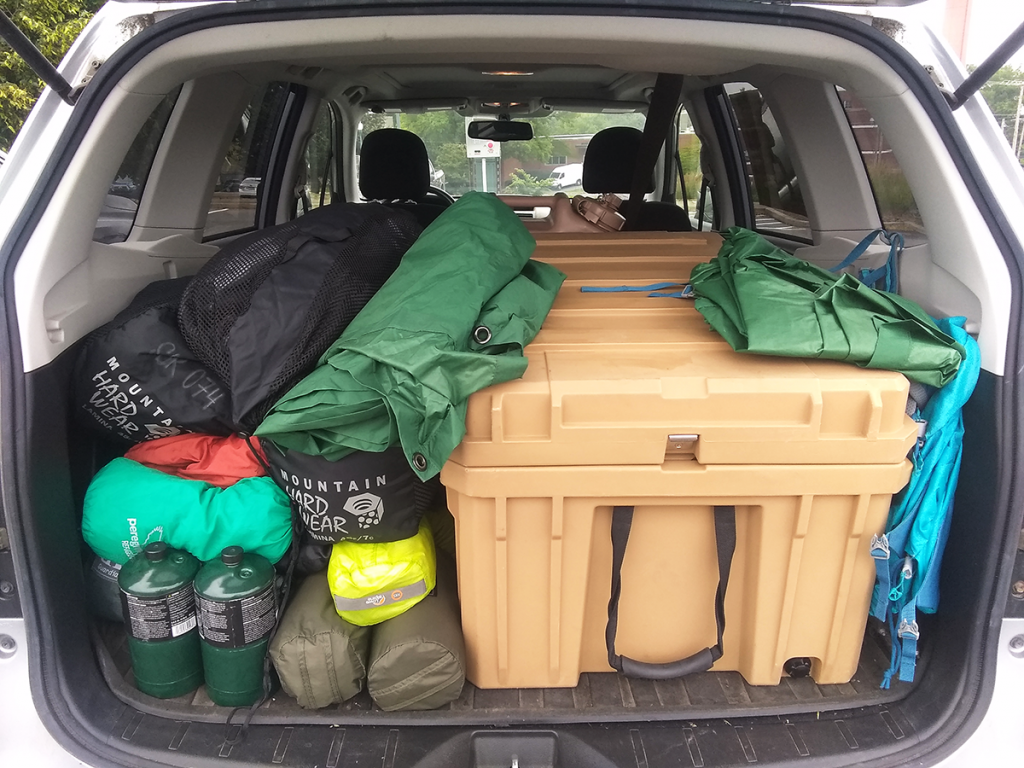
Camping. For science!
The enormous beige box is a “Basecamp Kitchen Kit,” in case you’re wondering. It’s half as heavy as it looks.
Discoveries in the Physics & Astronomy shop | Science, curiosities, and surprises

Camping. For science!
The enormous beige box is a “Basecamp Kitchen Kit,” in case you’re wondering. It’s half as heavy as it looks.
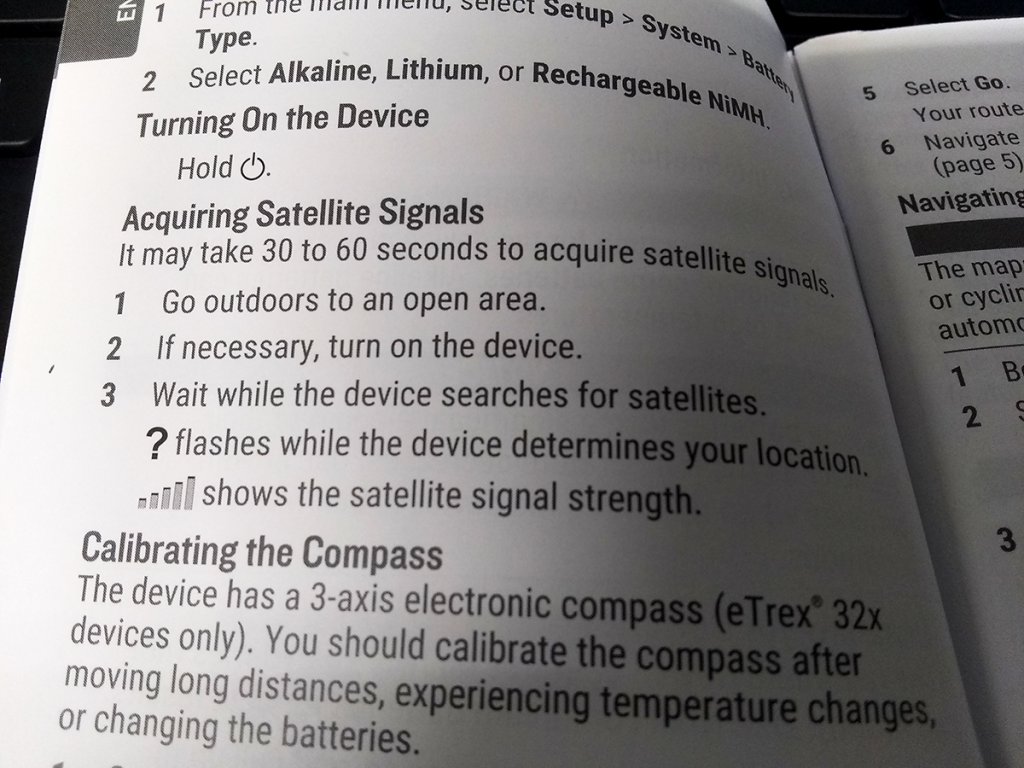
Writing an instruction manual is a serious challenge. Sometimes you have to convey certain key information, but doing so is awkward.
“If necessary, turn on the device.”
If necessary
Always assume it’s specified because this was previously a problem.
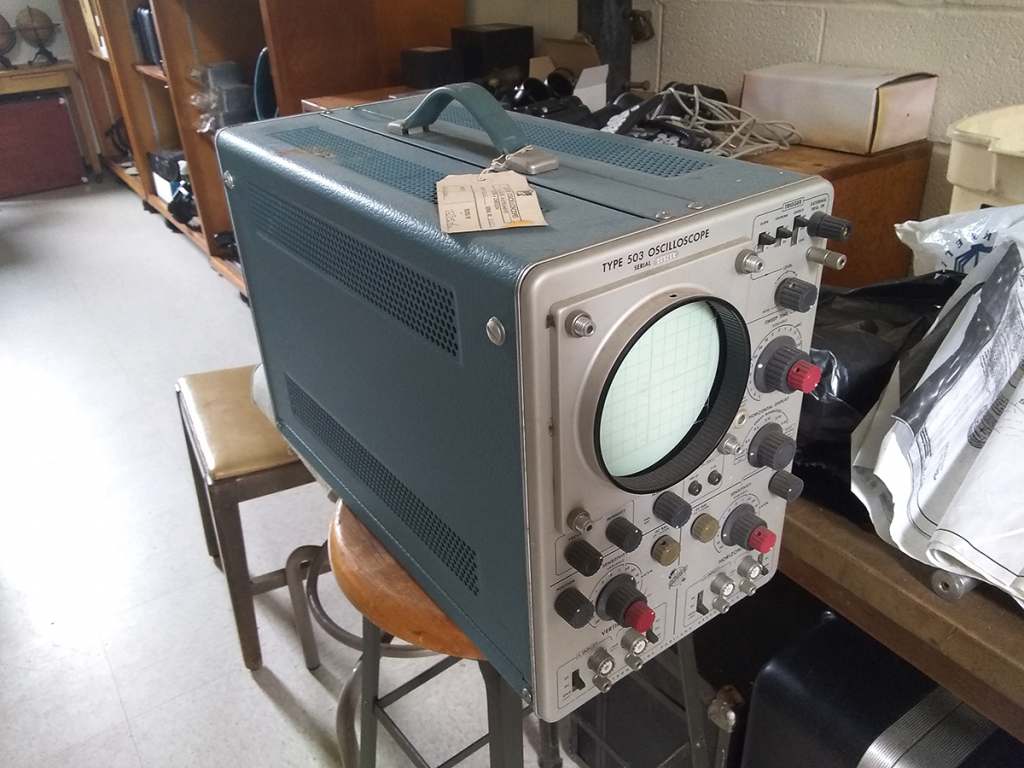
It’s a regular occurrence that we run across old objects which just aren’t useful anymore, at least not as they were originally intended. Sometimes they’re junk. Sometimes they work well enough, and it’s nice to have a backup around, just in case. And sometimes?
Sometimes it’s old enough that it’s got a little bit of cool going on. Like this 1960 Tektronix 503 oscilloscope. It shouts SPACE AGE! from all angles. (Our good friend Matt likened the round display screen to a porthole into a sea of electrons. Of course!)

It might not work anymore – probably depends on whether the capacitors are still in good shape – but we haven’t tried. It’s not like we’re going to use this in place of any of the other, more modern, higher-frequency, smaller-footprint ‘scopes we’ve got in numerous labs. This stays around because it looks amazing.
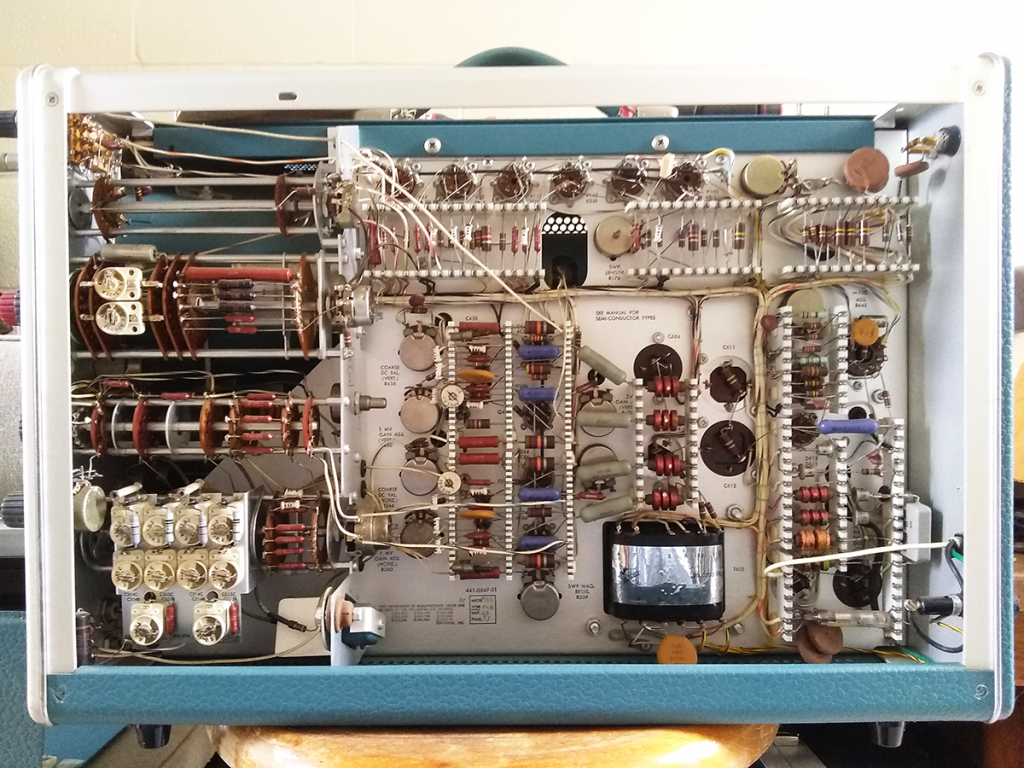
Even the insides are fantastic! Big honkin’ resistors, induction coils, capacitors, all widely spaced for effective heat dissipation. You can trace how each knob turns and switches circuit components in each of those cylindrical arrays. As a kid, this is probably the mental image of what it looks like inside a giant robot. Giant robots are the best robots.
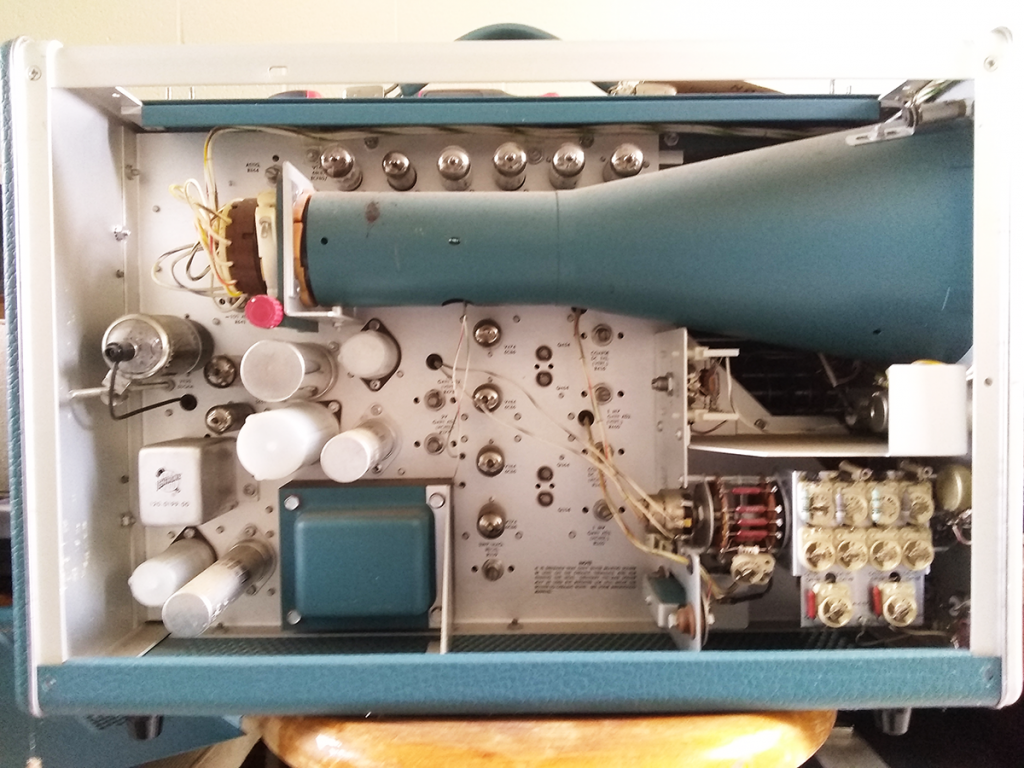
On the other side, we can check out all of the vacuum tubes that made this sucker hum. Plus a big ol’ transformer and a wonderfully stylish CRT for the display. Vacuum tubes don’t show up many places anymore, having been replaced with miniaturized circuit components, but we still have use for them in special cases. (Photomultiplier tubes in our wave-particle duality lab, for example.) Despite their rarity, you can’t deny that they look awesome.
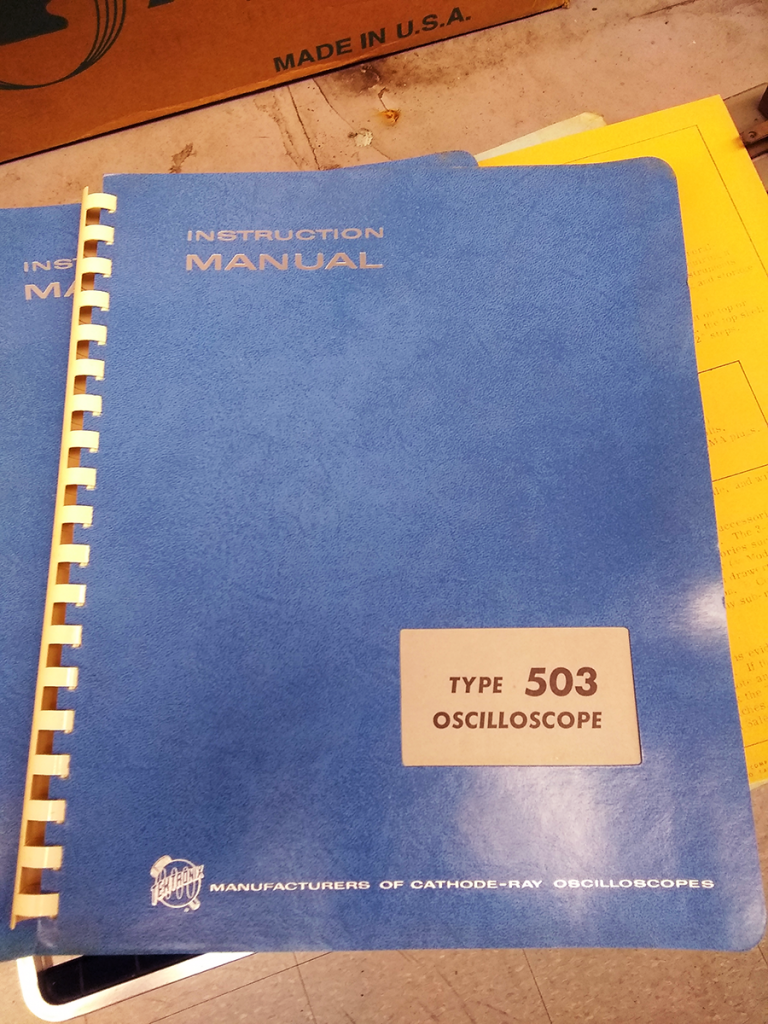
We even have a pair of manuals. A pair. Does that mean there were once a set of 503s around? Could we possibly stumble across another, gathering dust beneath a workbench in a dark corner someplace?
After all, that’s where this one popped up, undisturbed for decades. Never know what you’ll uncover.
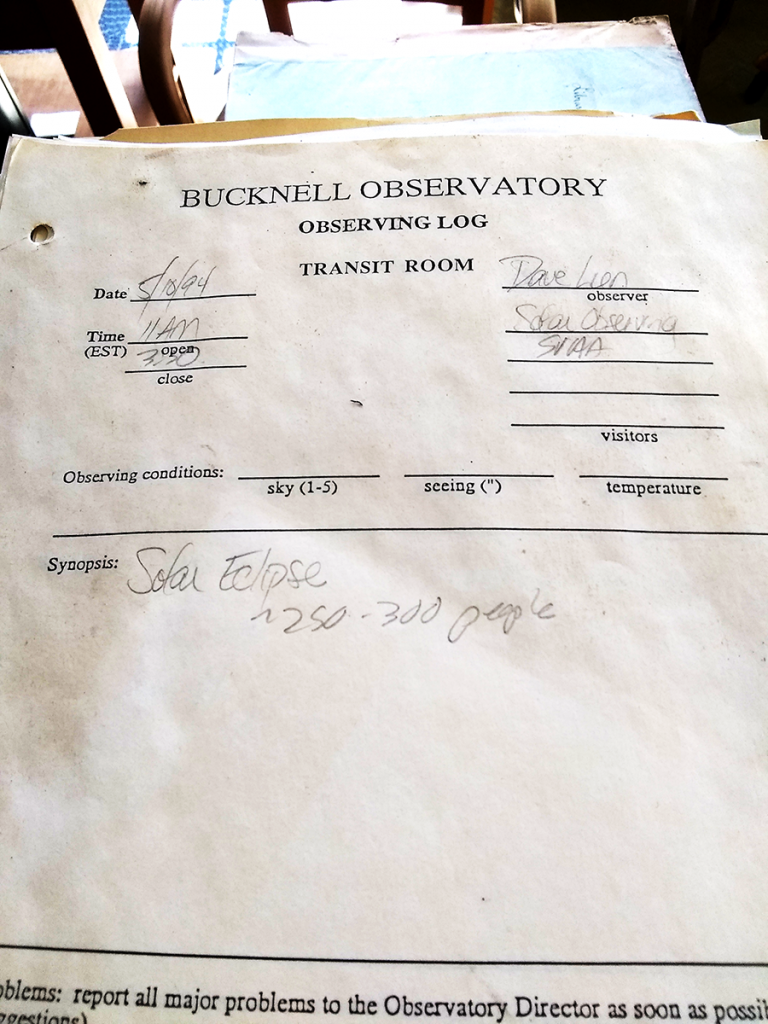
As we prepare for the next major solar eclipse in North America – mark your calendars for the 8th of April, 2024! – it’s fun to look back at Observatory records from previous eclipses. On May 10th, 1994, nearly 300 people congregated at the Observatory to take in the spectacle of a partial eclipse.
It’s worth noting that getting the full experience of totality requires a perfect combination of timing, location, and decent weather. Not simple.
This particular event was an annular eclipse, in which the moon’s apparent diameter was less than that of the sun, so that there was always a portion of the sun’s disc visible, creating an annulus (ring) when viewed along the path of greatest eclipse. Still amazing.
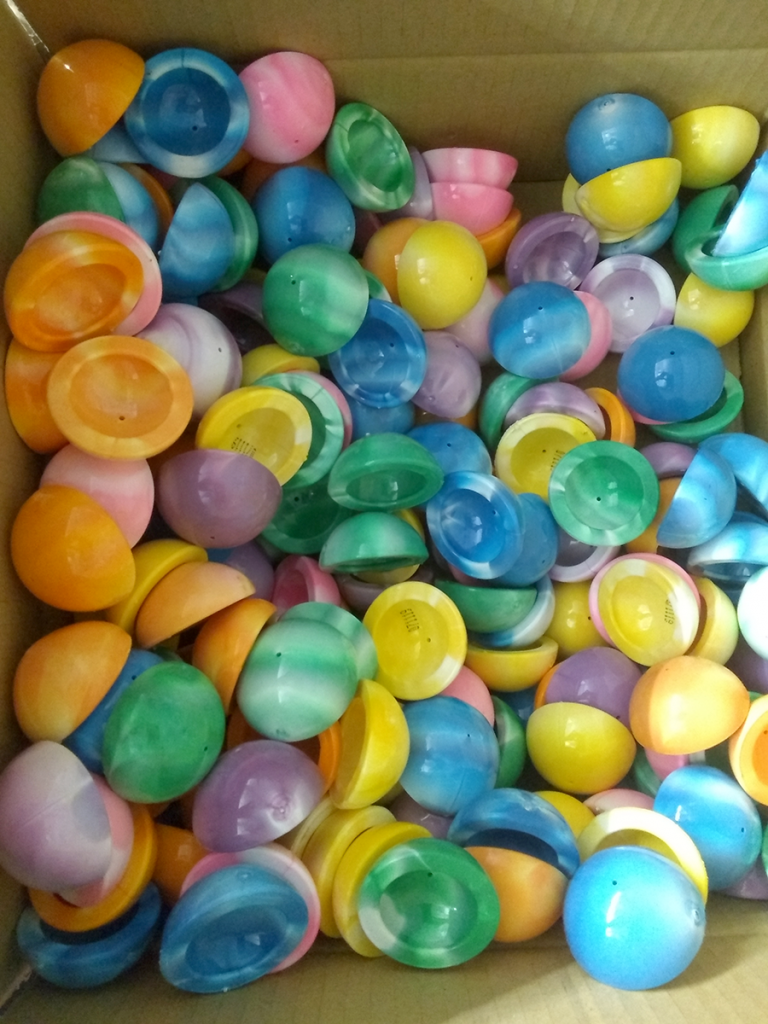
Summer is progressing quickly, and it won’t be long before it’s toy kit time once more, including this multicolored assortment of silicone poppers! Available in different colors and sizes, over time you learn which ones pop the best.
Marbled performs better than solid colors.
Pink is often the best. A good one can nearly slap the ceiling from bench height.
No certainty as to why. But they sure are fun!
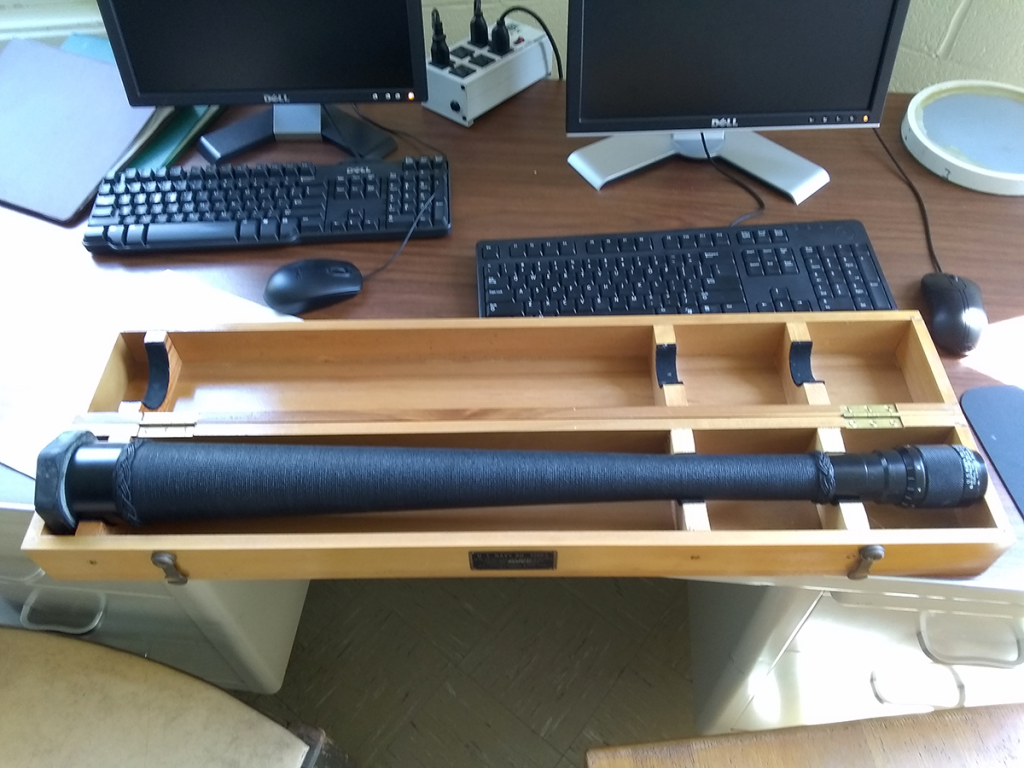
It’s not just telescopes at the Observatory. We also have a spyglass. What’s the difference?
There are a variety of potential optics for a telescope, using reflectors to reflect and focus light, using refractive lenses to bend and focus light, using mirrors to turn a beam around corners, using these in combination. Each has its pros and cons, and careful optical design and precise manufacturing work to gather lots of light, to provide good resolution and magnification, and to correct for optical aberrations.
And in doing all of that, the image reaching your eye or the camera sensor gets flipped upside down. Also in reverse, if you’ve got a mirror in your optical train. When looking at stars and deep sky objects, that’s not a big deal. “Up” is arbitrary in space. For terrestrial viewing, however, up matters. Seeing that incoming pirate ship upside down is disorienting. So a good spyglass keeps up as up.
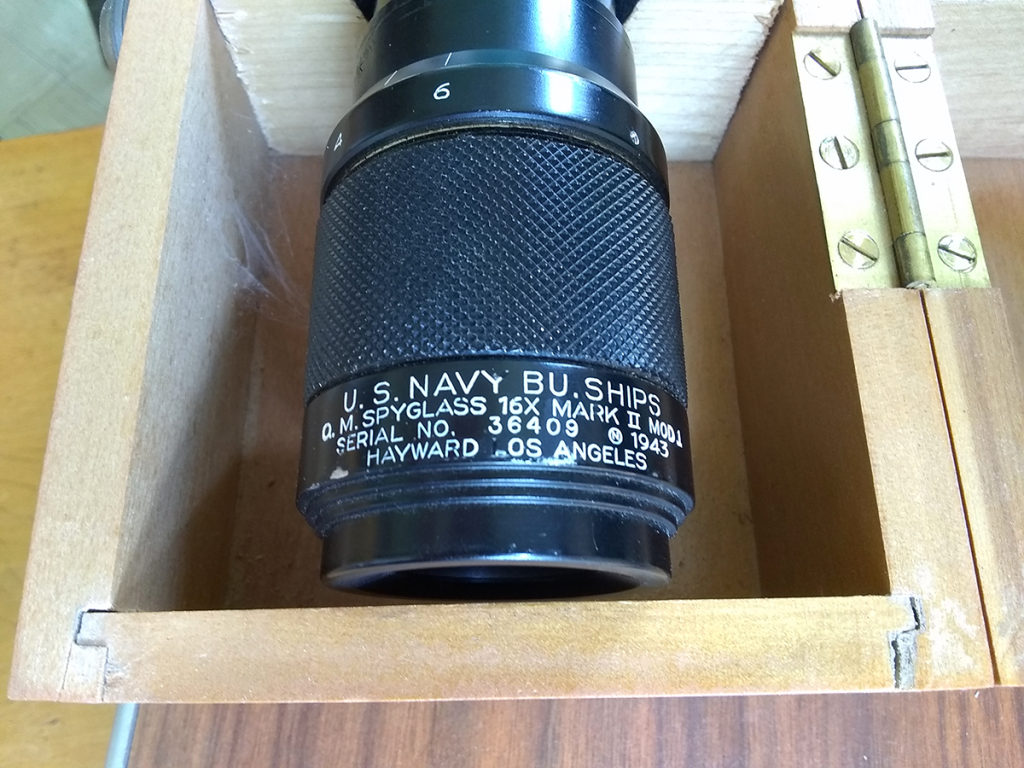
It does so by using a Galilean refractor design, which has a concave lens in the optical assembly to avoid the upside-down flip. The resulting telescope is necessarily longer than a comparable refractor with convex lenses, and thus heavier. That weight tends to limit the possible objective aperture size, and the practical magnification limits are low. Still: very effective for spotting Edward Teach at a distance, or for identifying the four largest moons of Jupiter.
Binoculars, incidentally, manage to keep the world upright thanks to a set of prisms between the objective lenses and the eyepieces. Yet another handy trick in the optical design toolkit.
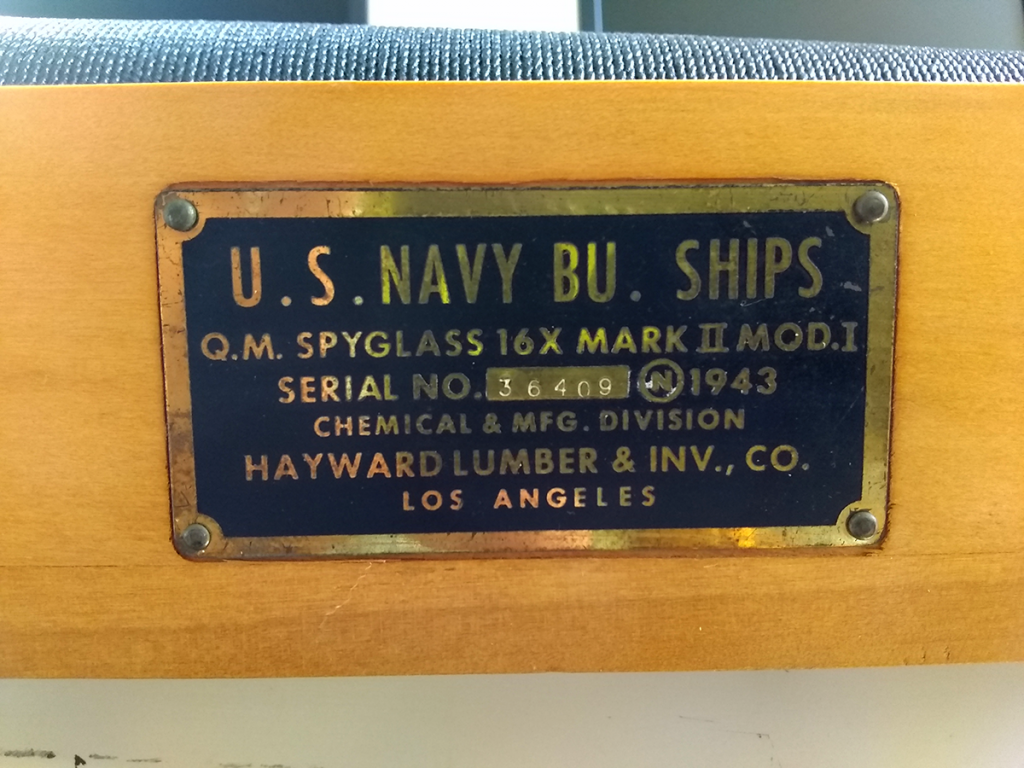
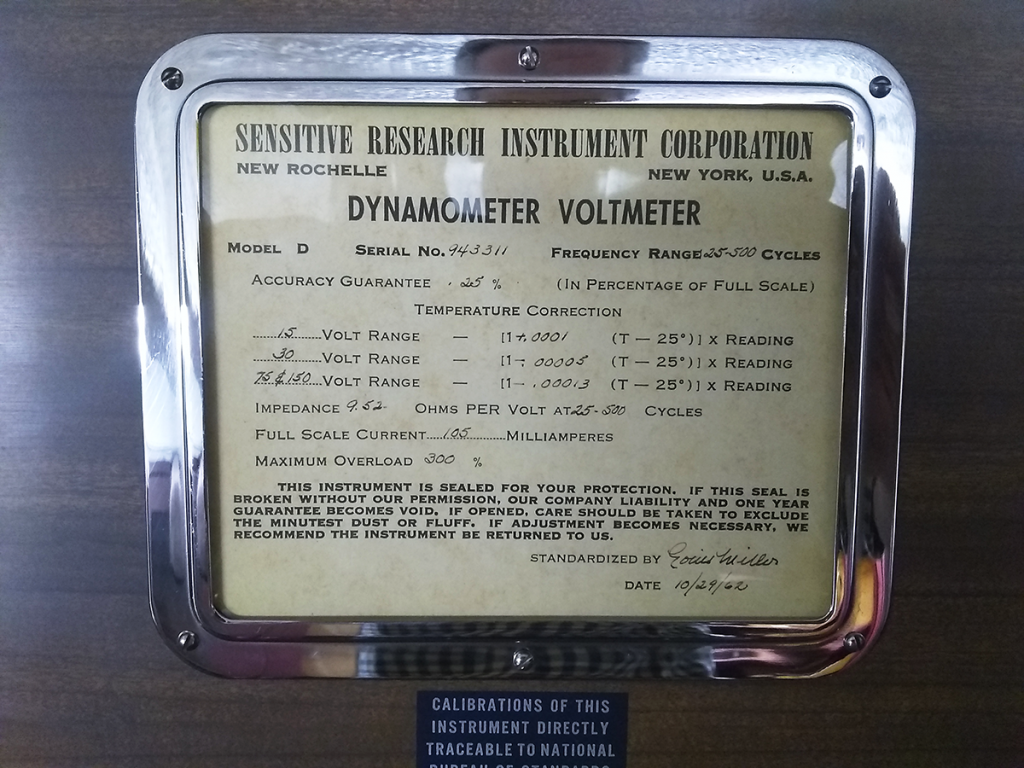
Sometimes you just have to love the directness of the manufacturers of scientific apparatus and equipment. “Sensitive Research Instrument Corporation” is not, by any standards, snappy. But it is clear about their product line.
An accuracy guarantee of 0.25%, standardized by Louis Miller on 10/29/62. Charmingly hand-written on this label affixed inside the case. (Sadly, no one marked this one with the price.)
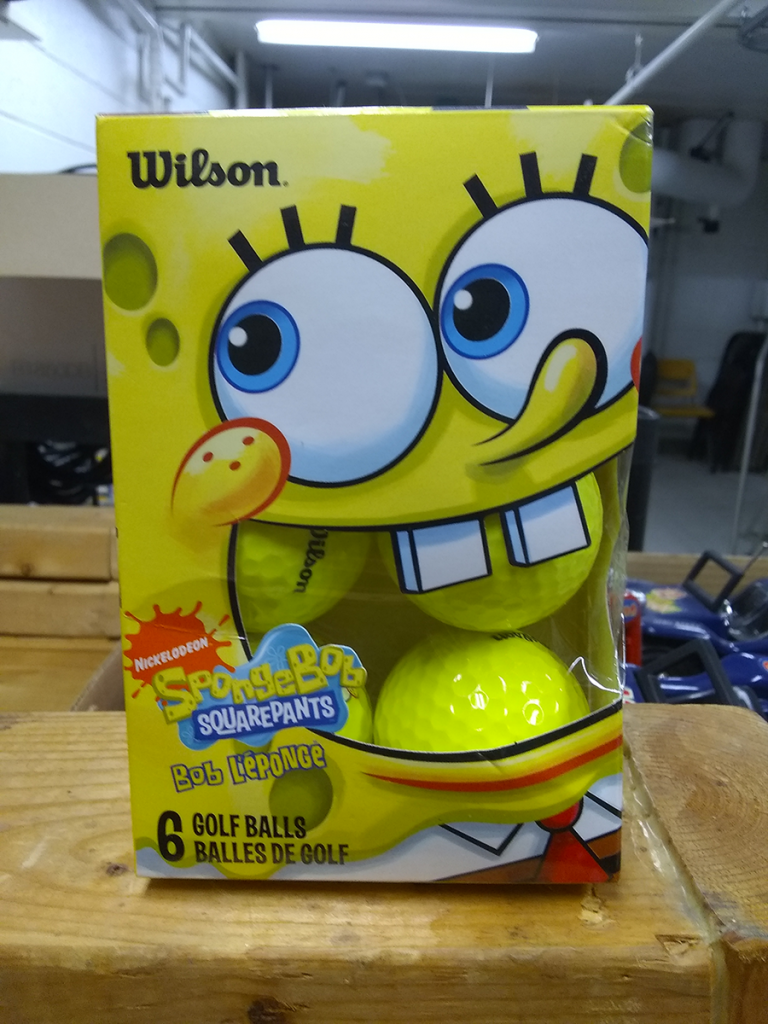
Still in the original box, of course. It’s unclear who the target market is or was for SpongeBob-branded golf balls, and yet here they are. Enjoy?
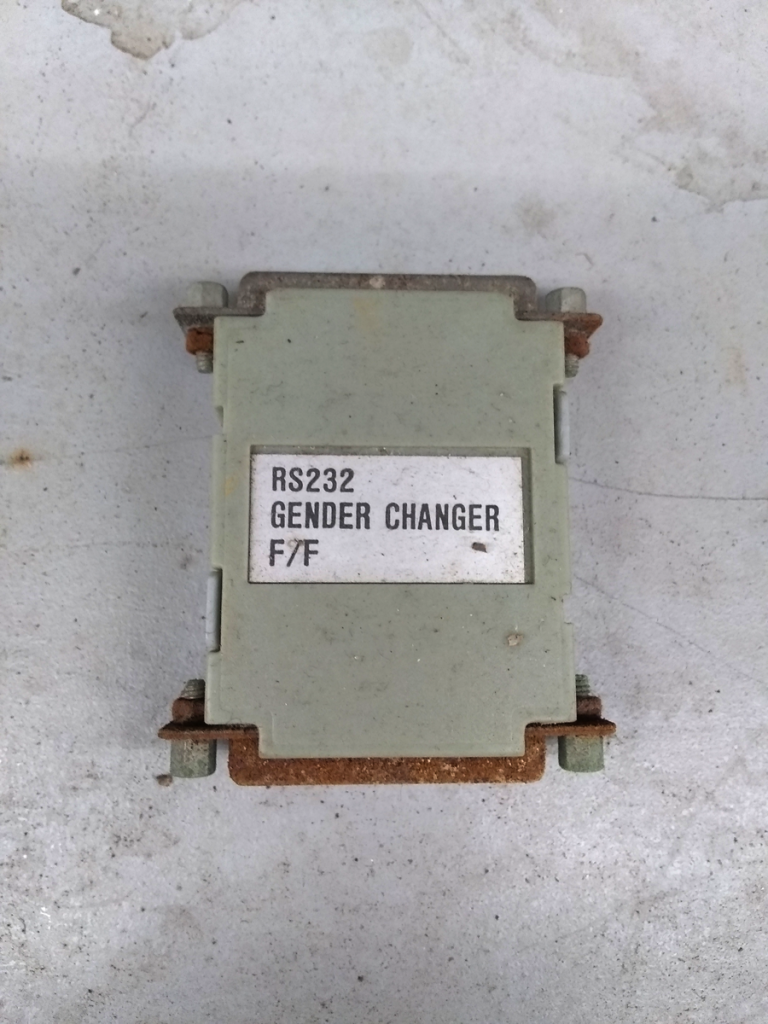
Not presented entirely without comment, as it’s hard to contain the urge toward snark. Yes, we know what this is and why it’s useful; yes, we know what they mean by “gender” and how F/F looks the same but changes things. Yes, yes.
At any rate: the cables which once needed this adapter are gone, as is the equipment it carried electronic messages to and from. Now we just have a block of metal and plastic and the opportunity to squint and say, “I’m not sure that’s how that’s supposed to work.”
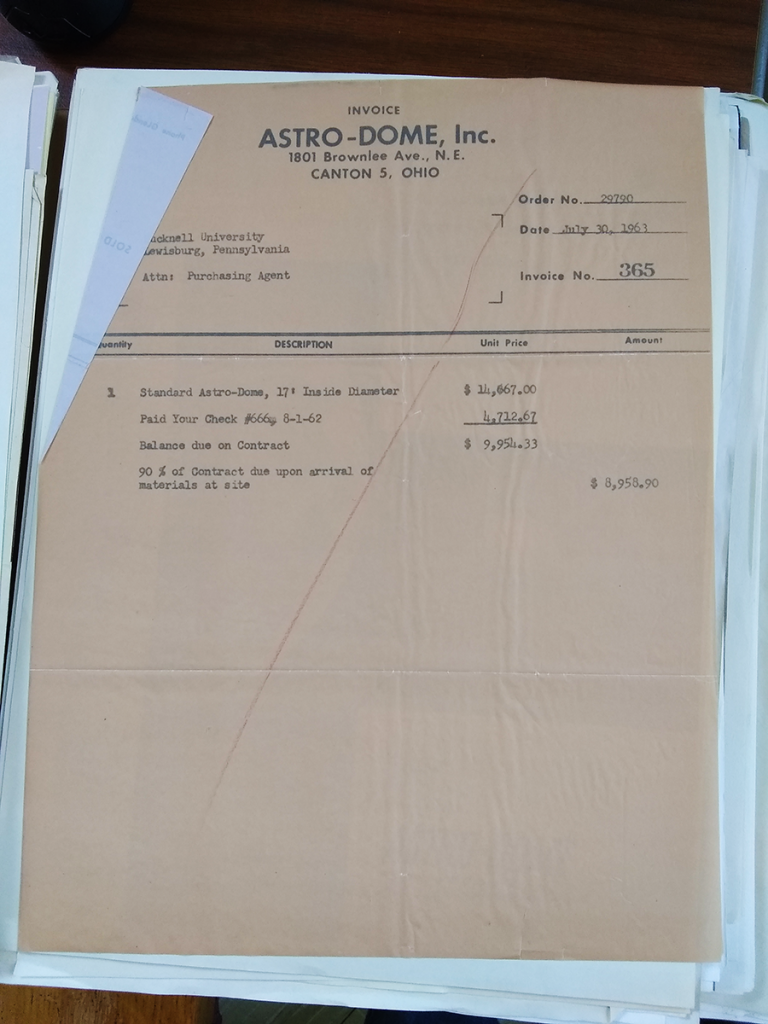
In 1963, one could purchase a Standard Astro-Dome with a 17′ inside diameter for the low, low price of $14,667. It must have been a worthwhile investment, because we’re still using it 60+ years later with no plans to update or replace it anytime soon.
Adjusted cost in 2023 dollars: $144,932.41.